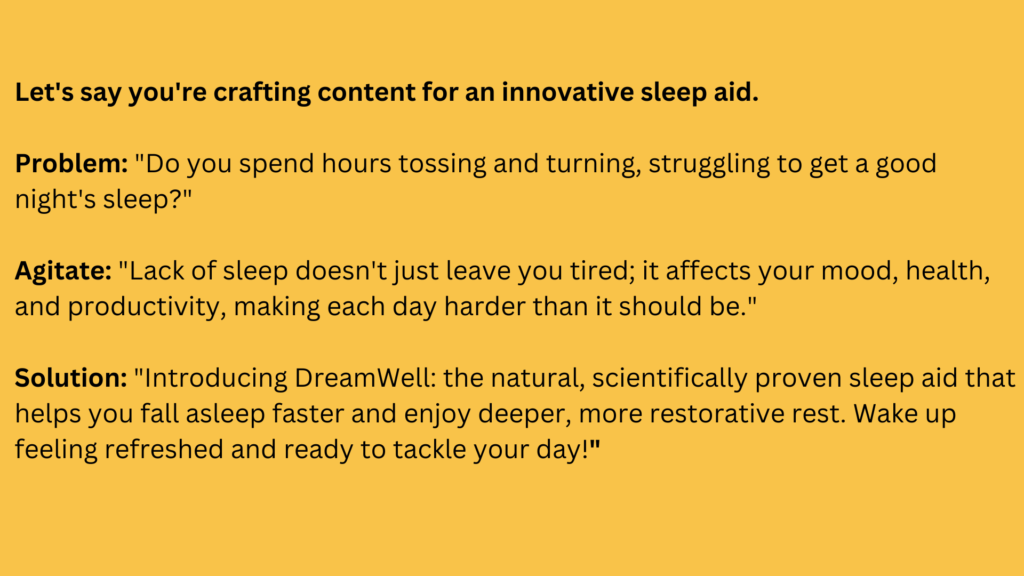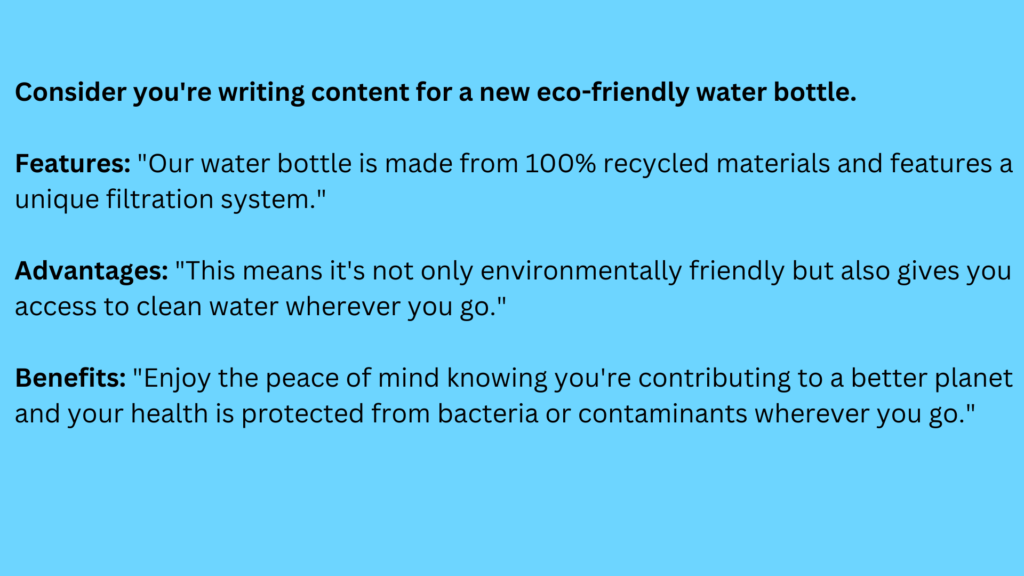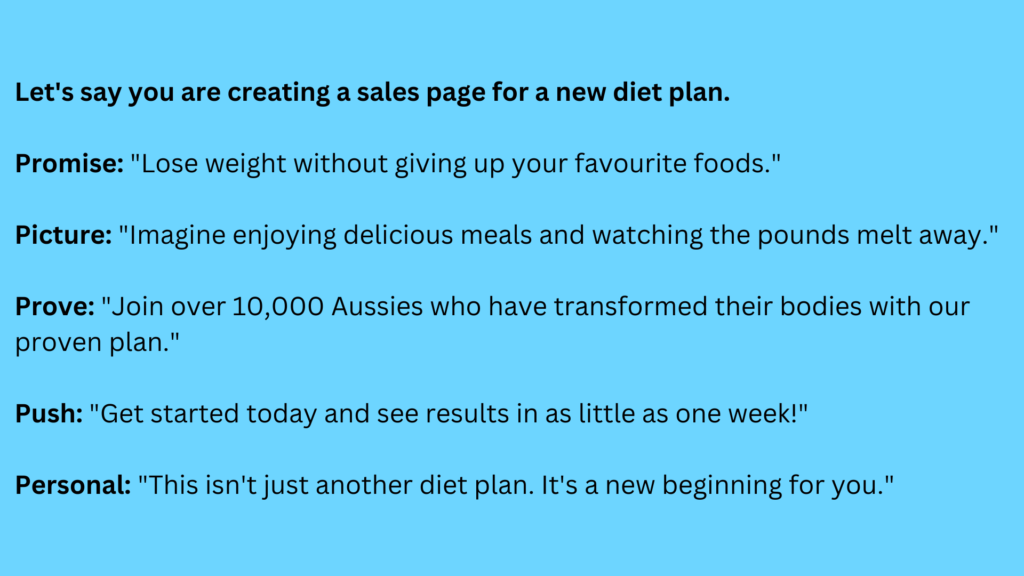A lot of copywriters will tell you that they aren’t great writers; they simply follow proven copywriting frameworks to ensure the psychology of their message is powerful and delivered in an engaging way. Copywriting frameworks can make writing copy faster, easier, and a whole lot less stressful.
But which copywriting frameworks work best in 2024? The 4 C’s, the 5 Ps, the 4 U’s… there are so many available and it’s difficult to know where to start.
In this article, I’ll cover 8 copywriting frameworks you need to make more sales in 2024:
1. AIDA
2. PAS
3. BAB
4. FAB
5. The 4 C’s
6. The 4 U’s
7. The 5 P’s
8. Gary Bencivenga’s Persuasion Equation®
Before I dive into the frameworks and how to use them, let’s quickly cover a few semantics.
What Is A Copywriting Framework?
Copywriting frameworks are blueprints to structure your content for maximum persuasion, clarity, and reader engagement. They take psychological and advertising principles and distil them into simple patterns. This makes it faster and easier to organise your thoughts, present your ideas logically, and ensure every piece of content has a purpose, leading your target audience towards a specific action.
Why Use One?
A framework helps you improve the quality of your content and the effectiveness of your communication, whether you’re writing blast emails to your list or an entire sales funnel from scratch. They should lead to better engagement, conversion rates, and ultimately, more sales. They also make writing copy faster, easier, and more effective, and they serve as a useful checklist so you don’t miss any critical elements of persuasion.
Copywriting Framework #1 – AIDA
AIDA stands for Attention, Interest, Desire, and Action. It’s one of the most classic and widely used copywriting frameworks.
How AIDA Works:
- Attention: Grab the reader’s attention with a powerful headline or opening statement. This is your first and possibly only chance to catch the eye of your potential customer (a great way to do this is by including an open loop in your copy).
- Interest: Once you have their attention, it’s time to build interest. Use compelling facts, storytelling, or emotional appeals to engage the reader and make them want to learn more.
- Desire: Transition from interest to desire by highlighting the benefits of the product or service. Make it clear how it solves a problem, improves their life, or fulfils a need.
- Action: Finally, prompt the reader to take a specific action. This could be to make a purchase, sign up for a newsletter, or follow a link. The call to action should be clear, compelling, and easy to follow.
AIDA Example:

AIDA’s straightforward structure makes it incredibly versatile and effective for everything from short social media ads and squeeze pages, to long-form sales letters and landing pages. It’s about creating a journey from the first glance to the final decision, making it a staple in your toolkit.
Copywriting Framework #2 – PAS
PAS stands for Problem, Agitate, Solution. It’s a potent framework that uses ‘fingernail copy’ to really grate away at the pain points of the target market.
How PAS Works:
- Problem: Clearly state a problem that your target audience faces. This should be a specific, relatable issue that immediately gets the reader nodding in agreement.
- Agitate: Amplify the problem by discussing its implications and the discomfort it causes. This step is about evoking an emotional response and a sense of urgency.
- Solution: After the reader is fully engaged with the problem and feeling the pain, introduce your product or service as the solution. Explain how it alleviates the problem and improves the reader’s situation.
PAS Example:

The PAS framework is highly effective for products or services that relieve pain points or solve problems. It creates a compelling narrative that makes the solution offered seem not just desirable but necessary.
Want to see a real-world example? You don’t have to look too far. See how Magic Spoon used the PAS copywriting framework for an “us VS them” comparison panel on their website.
Copywriting Framework #3 – BAB
BAB stands for Before, After, Bridge. This framework is designed to show the transformation that your product or service can bring about, highlighting the benefits or positive change.
How BAB Works:
- Before: Describe the current problem or situation that the reader is facing. Make it relatable and vivid so the reader recognises their struggle.
- After: Describe the improved scenario after the problem is solved. Highlight the benefits and positive outcomes that the reader wants to achieve.
- Bridge: Present your product or service as the bridge that will take them from the ‘Before’ state to the desired ‘After’ state. Make it clear and compelling.
BAB Example:

The BAB framework is particularly powerful for products or services that offer a clear and significant transformation in the user’s life or work. It paints a compelling before-and-after picture that makes the solution irresistible.
Copywriting Framework #4 – FAB
FAB stands for Features, Advantages, and Benefits. It’s great when you want to break down and present your product or service in a way that highlights not just what it is, but why it matters to your customer.
How FAB Works:
- Features: Describe the specific features of your product or service. These are factual statements about what it is and what it does.
- Advantages: Explain the advantages of these features. How do they make your product or service better or different from the competition?
- Benefits: Translate these advantages into benefits. How do they impact the life of the customer? This is where you connect emotionally and practically with the reader’s needs and desires.
FAB Example:

The FAB framework is particularly effective for product-centric content or SaaS platforms, where understanding the distinction between features, advantages, and benefits can significantly impact the persuasive power of your copy.
Copywriting Framework #5 – The 4 C’s
The 4 C’s framework is a set of guiding principles rather than a step-by-step structure. I like to use the 4 C’s to review copy to make sure it’s optimised for clarity and conversions.
How the 4 C’s Work:
- Clear: The message should be straightforward and easy to understand. Avoid jargon or complexity that might confuse the reader. You can use the Hemingway editor to ensure it’s easy to read (aim for grade 5 readability)
- Concise: Keep it brief. Deliver your message in as few words as possible while still being complete and effective.
- Compelling: Make the content engaging and persuasive. Use emotional triggers, storytelling, or strong facts to draw the reader in and motivate them.
- Credible: Ensure that your message is believable. Use testimonials, data, expert opinions, or other proof to support your claims.
4 C’s Example:

The 4 C’s can serve as a quick checklist to refine and improve your message, ensuring it’s always sharp and effective. You can literally use them to review every piece of copy you write.
Copywriting Framework #6 – The 4 U’s
The 4 U’s framework stands for Urgent, Unique, Useful, and Ultra. It was developed by Michael Masterson, a serial entrepreneur and direct response copywriter who helped grow Agora.
How The 4 U’s Work:
- Urgent: Create a sense of urgency to encourage immediate action. Phrases that imply time sensitivity or limited availability can be very effective.
- Unique: Make the message stand out by offering something that is not available elsewhere or presenting it in a novel way.
- Useful: Ensure that the message promises a clear benefit or value to the reader.
- Ultra-specific: Be as specific as possible about what the reader can expect. Vagueness is the enemy of compelling content.
4 U’S Example:

The 4 U’s framework is most commonly used in headlines and subject lines but can also be applied to other areas of content to make it more engaging and action-oriented.
Copywriting Framework #7 – The 5 P’s
There are actually a stack of different variations on the 5 P’s. It seems like each time I see them the P’s stand for different words or they’re put in a different order. The 5 P’s I originally learned were: Promise, Picture, Prove, Push, and Personal.
How the 5 Ps Work:
- Promise: Start by making a compelling promise or posing a provocative question that addresses a desire of the reader.
- Picture: Paint a picture of the reader enjoying the benefits of the promise. Use visceral, sensory language to engage their imagination.
- Prove: Offer evidence to support your promise. This could be statistics, testimonials, case studies, or other forms of proof.
- Push: This is your call-to-action, which should be clear and compelling.
- Personal: Make it personal. Speak directly to the reader and make them feel like you are addressing them individually.
5 Ps Example:

The 5 Ps framework is especially powerful for sales and marketing content where the goal is to lead the reader toward a specific action or conversion.
Copywriting Framework #8 – Gary Bencivenga’s Persuasion Equation®
Created by legendary copywriter Gary Bencivenga – who is one of the most quoted and most successful copywriters of all time – the Persuasion Equation® can be applied to any product, in any market, for any advertising you’ll ever run.
How it works:
- Urgent Problem: Identify a problem that is urgent to the reader. This should be a problem that they feel needs immediate resolution.
- Unique promise: Promise to solve that problem in a new or unique way.
- Unquestionable proof: Case studies, reviews, testimonials, scientific backing, expert endorsement, a rock-solid guarantee or a combination of them all can be enough proof to sway even the most sceptical buyer.
- User-friendly Proposition: Present a proposition that is easy for the user to understand and act upon. This includes making the next steps clear and straightforward.
Persuasion Equation Example:

Bencivenga also says you can use the “crackerjack secret” to make the advertising even more compelling (the crackerjack secret is to make your advertising look valuable the same way the crackerjack box used to include a surprise toy or game so it was irresistible to open).
Summing Up…
You’ve just covered 8 of the most powerful and useful copywriting frameworks in the game. Once you start to use them on a weekly or even daily basis, they become second nature. You can twist them and tweak them to craft compelling copy and make more sales. You can also combine them with other copywriting tips and techniques to improve the marketing message for your business.
Alternatively, if you’d rather delegate and have an expert write your copy, you can reach out to us. As a Melbourne-based copywriter with clients all over Australia (and the world), we can help you craft compelling and high-converting copy for your business. Simply send us a message or book a free consultation and we’ll jump on a call to discuss how we can help you.
